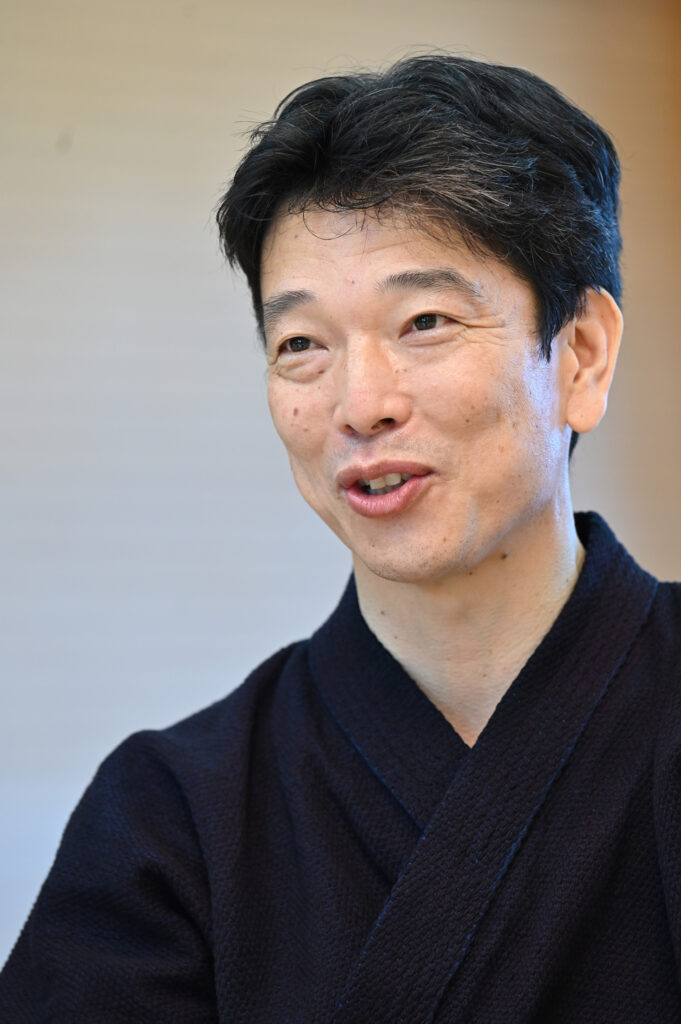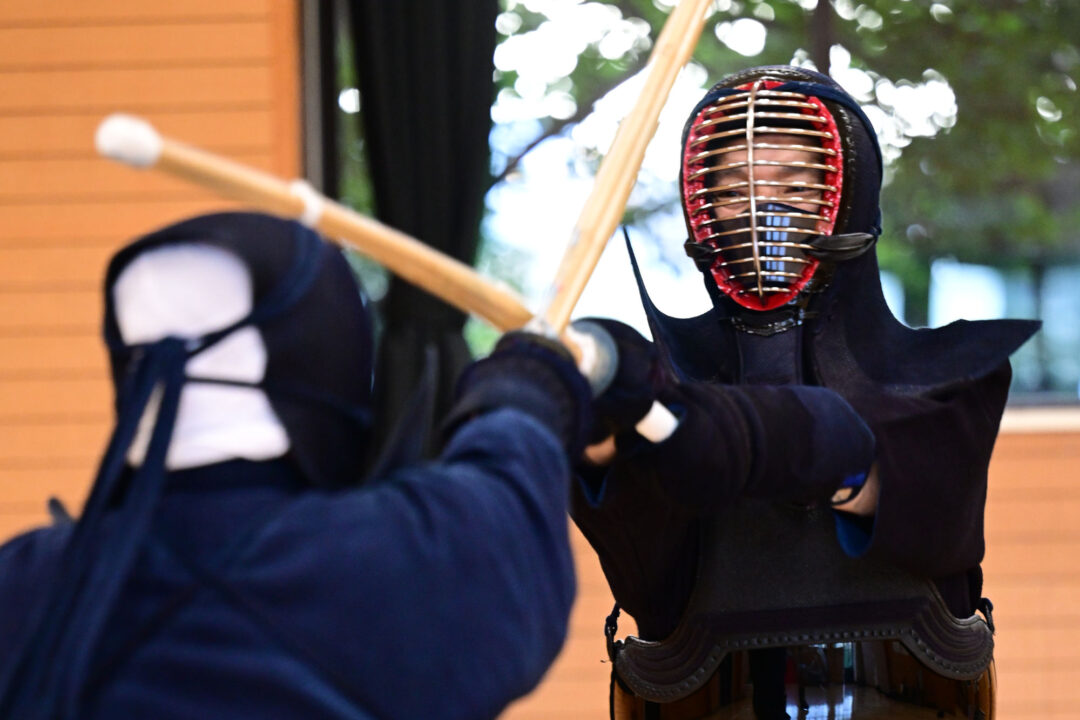2022.10 KENDOJIDAI
Composition: Teraoka Tomoyuki
Photography: Nishiguchi Kunihiko
Translation: Jouke van der Woude
Recently, passing the eighth-dan examination has become extremely difficult, but Saito Yuichi successfully passed the exam this spring by overcoming this high hurdle. Saito stated that changing his approach in applying Seme was the key to his success. By thinking more logically and strategically instead of relying solely on intuition, he was able to identify openings in his opponent’s defenses. What is Saito’s approach to creating opportunities through Seme?
Saito Yuichi, Kyoshi 8th Dan

Applying Seme for openings rather than waiting and reacting
I passed the 8th Dan examination on my 11th attempt this spring. What I feel after passing is that it was a completely different feeling from my previous Tachiai. Even in the previous 10 attempts, there were several Tachiai where I felt that there were good aspects in my performance, but I realized in this examination that it was a misunderstanding.
Looking back at the Tachiai where I did not pass, I feel that most of them were due to me trying too hard to impress the judges. This time, I discarded that feeling and focused on being myself. As a result, I was able to concentrate on my opponent and showcase the Kendo I have built up over the years. I had never passed the first round of the exam before, and this was my first time taking the second round. Even while waiting after the first round, I was looking forward to seeing how my opponent would perform. I think this was possible because I was able to relax mentally.
I started taking the 8th Dan exam when I was 46 years old. At first, I had the naive belief that I could pass after two or three attempts. However, as I attempted the exam several times, I saw renowned teachers fail, which made me feel more and more uneasy. More often than not, my exam was taken on the second day, and I think I was in a situation where my spirit was already broken before the exam, thinking that it would not go well, based on the low pass rate on the first day.
With this reflection in mind, I decided to focus only on my opponent during the exam. I was able to face the exam with a blank slate, without thinking about unnecessary things, which I believe helped me to move in the right direction. During the Tachiai, I was able to see my opponent’s reactions and movements well without rushing to attack. Not being overly conscious of trying to strike straight and using my sword as usual, both on the left and right sides, may also have been one of the reasons why I passed, looking back now.
When considering the theme of seizing opportunities and my challenge to attain the rank of 8th Dan, one common factor I feel is the difference in timing when striking. While receiving advice from various teachers, I felt a sense of doubt within me. Upon being told that I shouldn’t use so many moves, I neglected to attack with a long-term strategy, and in some ways became what’s called a “waiting sword.” In Kendo, if you don’t attack with a long-term strategy, you cannot create openings for yourself. Up until then, I believe I wasn’t seizing opportunities, but rather just adapting to my opponent.
For this exam, I had the honor of having Nakata Yuji Sensei from the Edogawa Kendo Federation, and Tominaga Tetsuo Sensei, who I have been acquainted with for many years, watch me spar and help me correct my mistakes. I think I was able to create openings by attacking with a long-term strategy and moving my opponent. Tominaga Sensei taught me not to rush my strikes during practice. Not rushing strikes and waiting for the opponent’s strike are vastly different. I faced my opponent in a fully prepared Kamae and refrained from striking when it wasn’t my opportunity. On the other hand, I attacked with a long-term strategy to create opportunities for myself. I feel that I was able to gain many opportunities and lead to satisfactory Ippon for myself because I was able to practice this for the exam.
From relying on intuition to theory-based Kendo
The rest of this article is only available for Kendo Jidai International subscribers!


